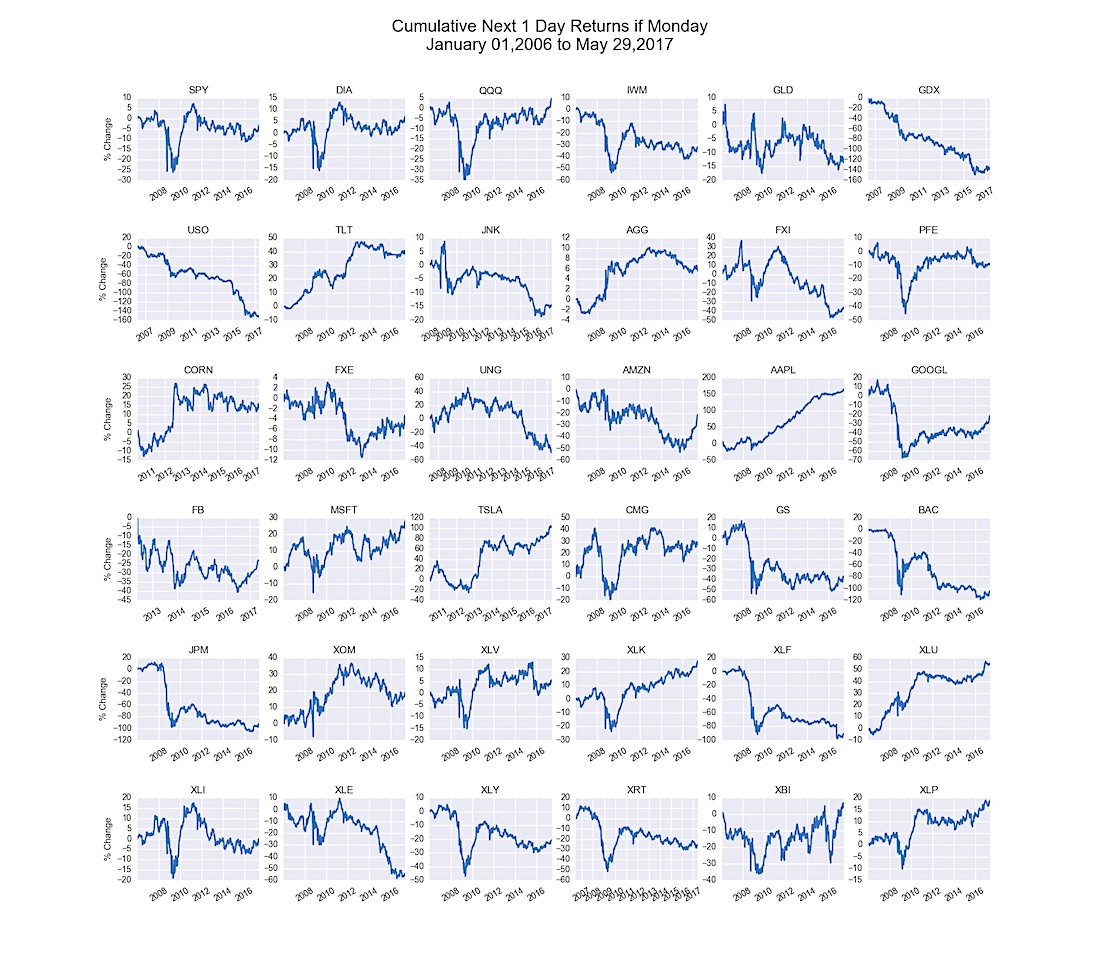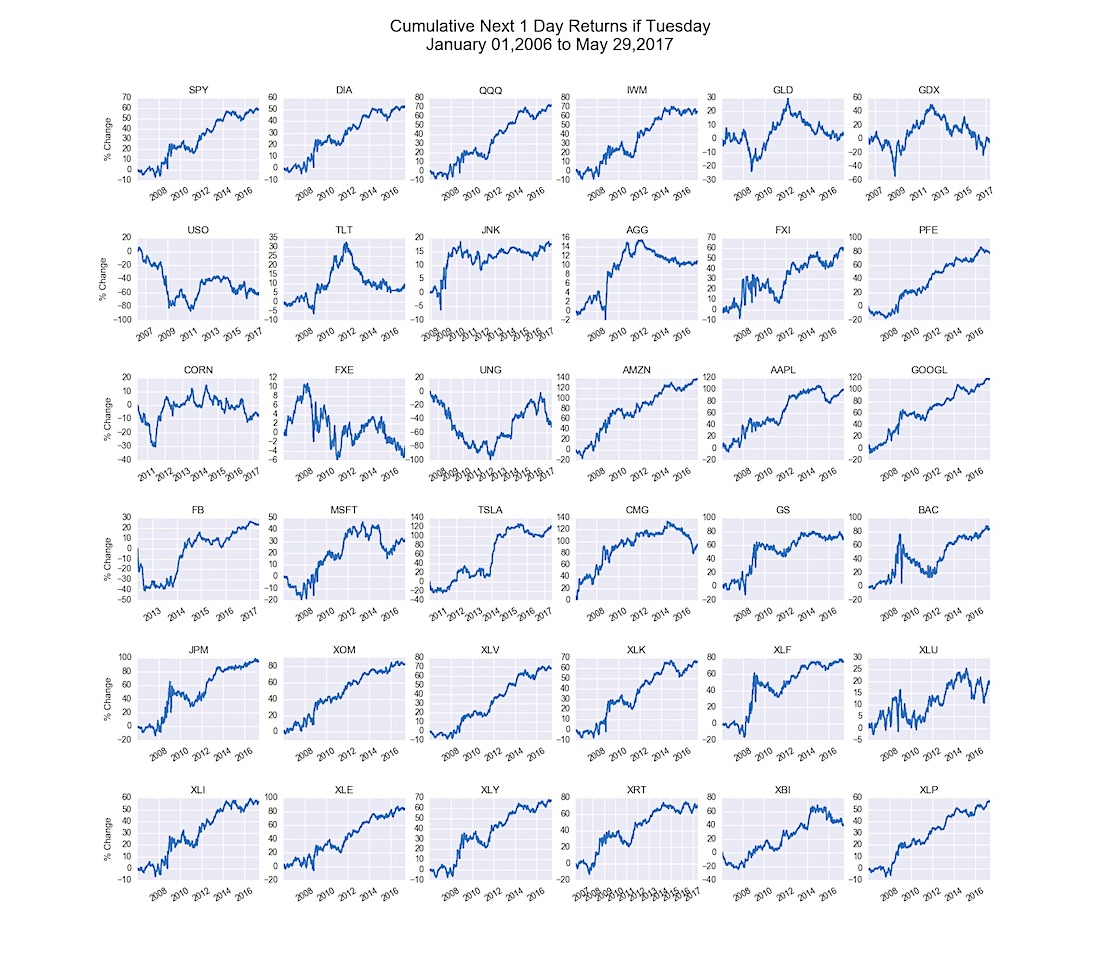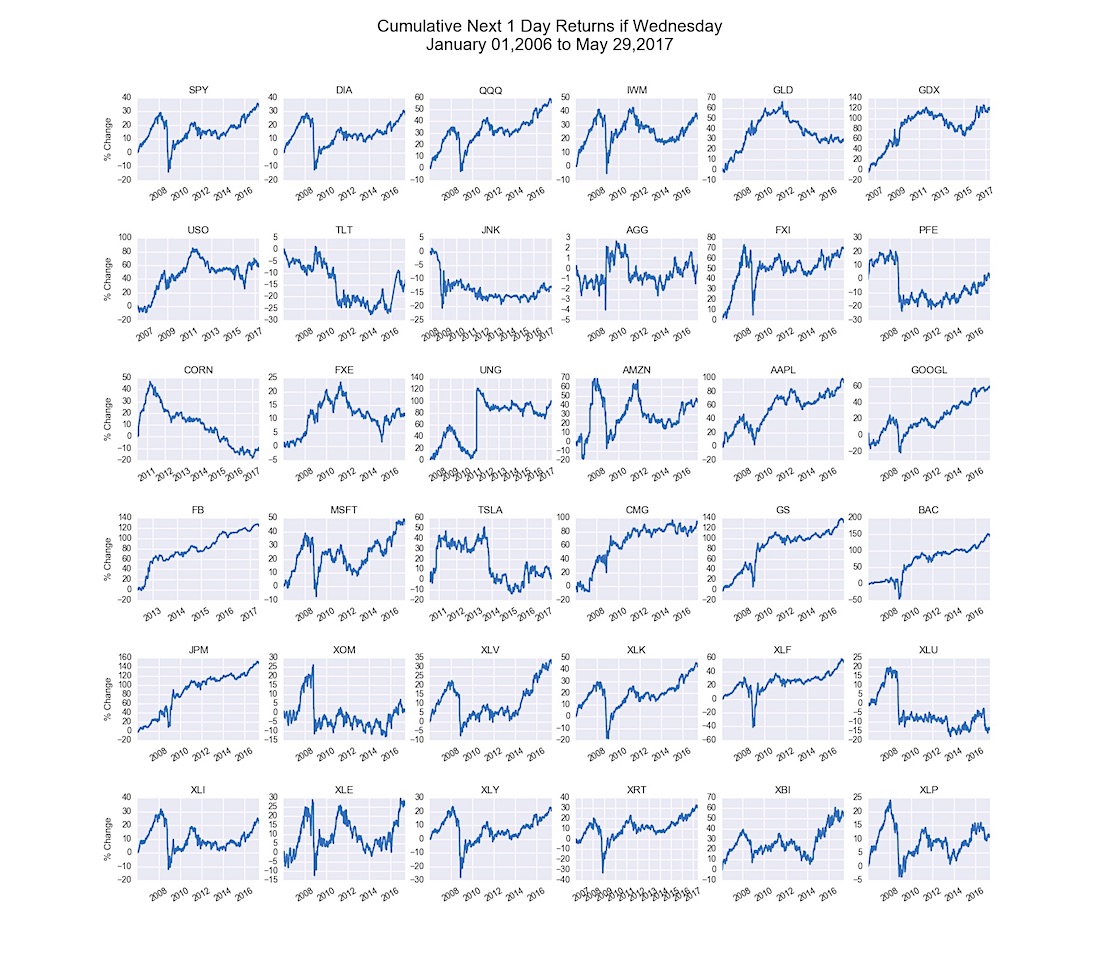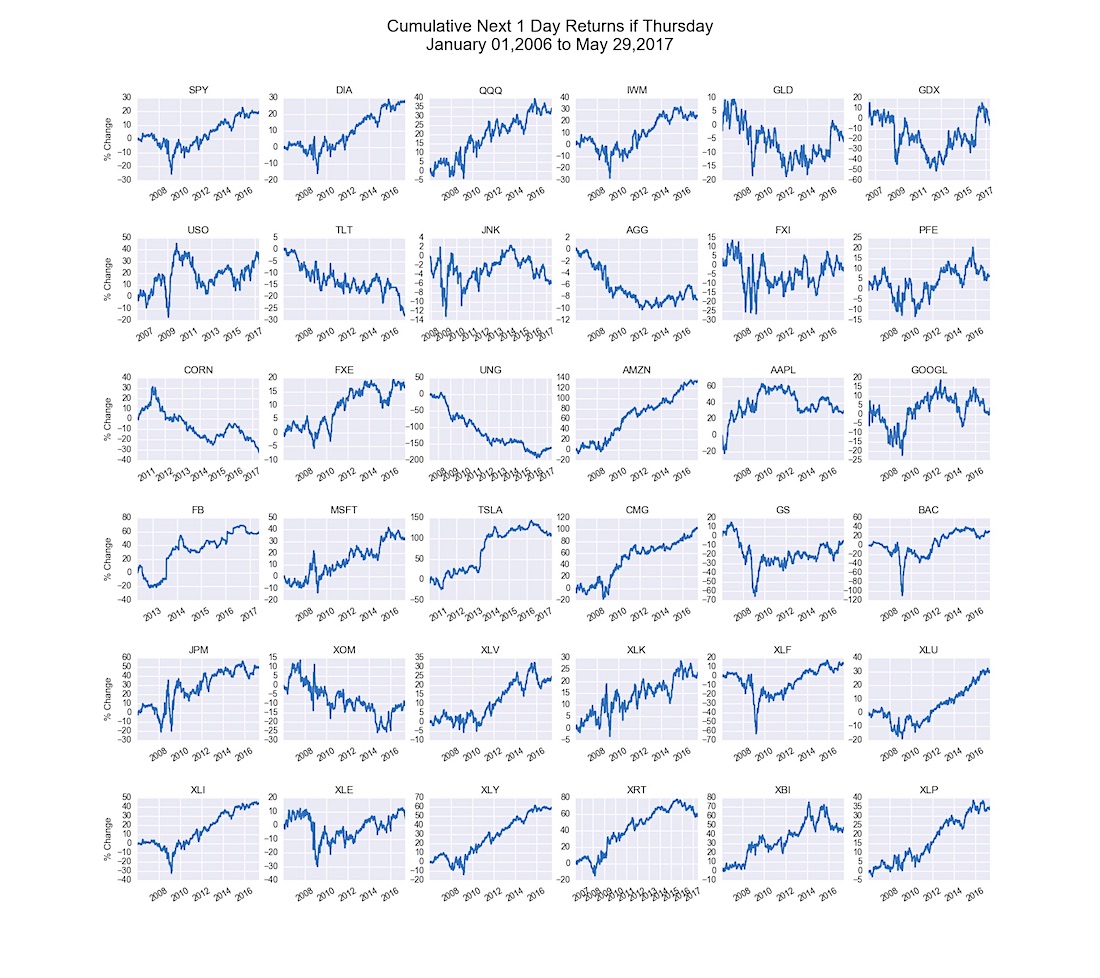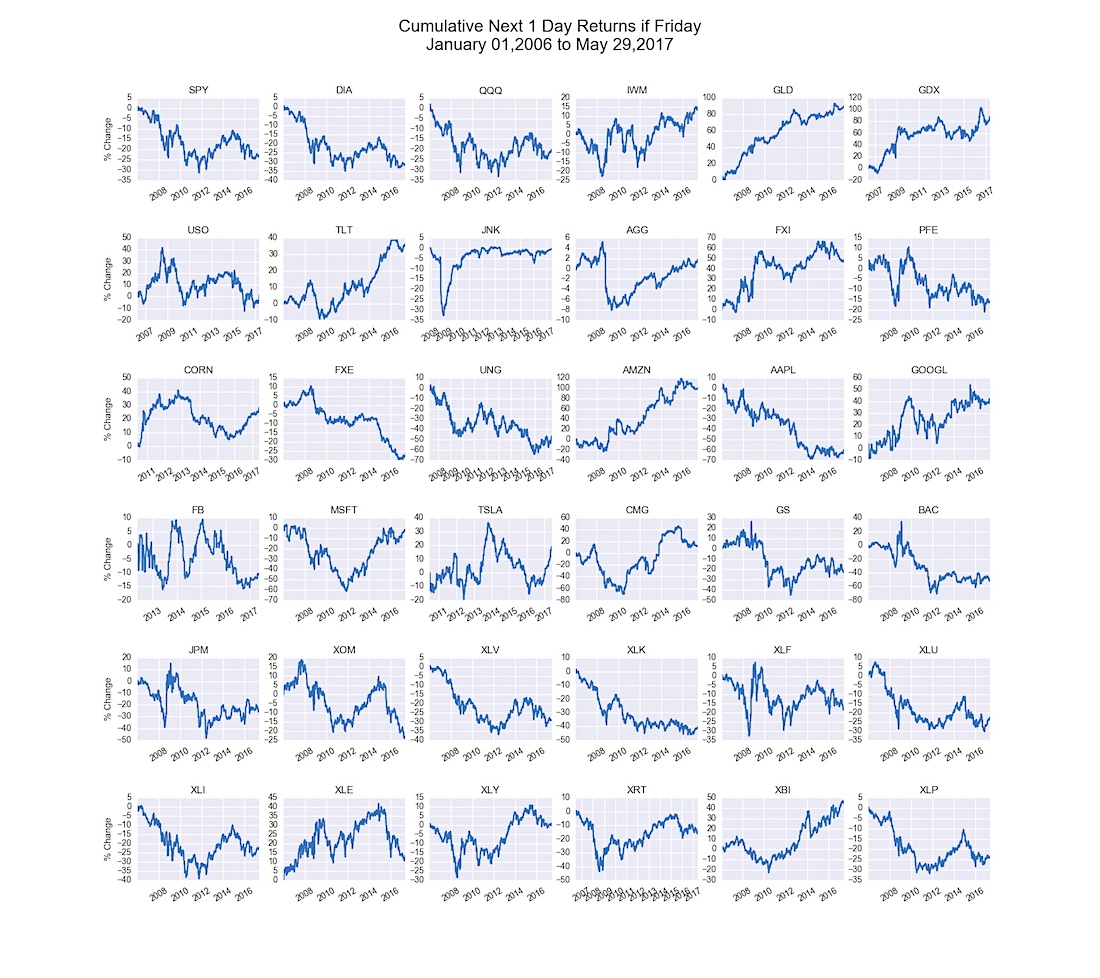Much of trading can be broken down as conditional probabilities. And there’s a distinct benefit in understanding what is likely to happen if some condition (or set of conditions) is true or not.
For example, is tomorrow more or less likely to close higher if we are above the 200 day moving average or below the 200 day moving average?
However, there has been much talk about seasonality as we approach summer trading. For that reason, I would like to share some simple graphs showing how the big stocks and ETFs fair on each day of the week. In other words, do certain stocks or ETFs perform better on certain days of the week or is day of the week meaningless/random?
We have all heard about “Turnaround Tuesday” for the S&P500, right? How about buying Gold on Friday ahead of the weekend? Let’s see if these market axioms are true (they are).
Below are charts showing the gains achieved on each day of the week for each stock and ETF listed below.
CHARTS: Conditional Probabilities by Day of Week
This is simple information that can help ease some stress or provide some additional edge in your trading or investment allocations. Looking to buy FaceBook? Maybe wait until Wednesday? The main point I always try to make is that it is important to know these “conditions” that lead to higher probabilities of success. These conditions can be found through testing and historical research and can provide slight edges against those that do not understand these nuances.
Over at Build Alpha, we have tools that can help those with no programming capabilities do large scale testing – it is time to level the playing field.
Side note: *Data source is Google Finance API. This does present some problems as some data is not adjusted for dividends by Google Finance; however, the overall trends are more or less intact. I use this source as it is simple to replicate for many aspiring programmers and those that do not have access to premium data sources.
Twitter: @DBurgh
No position in any of the mentioned securities at the time of publication. Any opinions expressed herein are solely those of the author, and do not in any way represent the views or opinions of any other person or entity.

